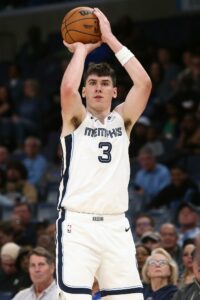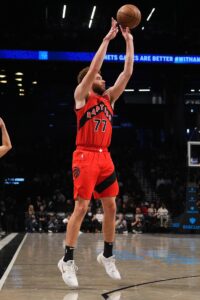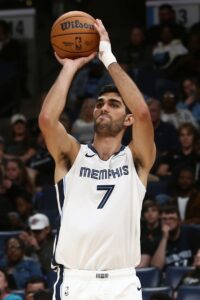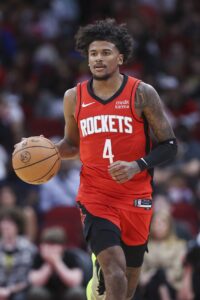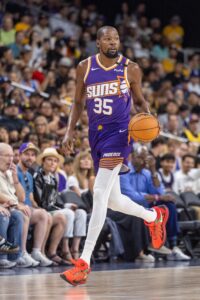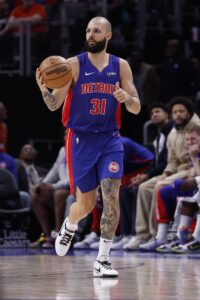The NBA’s annual deadline for rookie scale contract extensions passed on Monday, officially bringing the extension period for 2021 first-round picks to an end.
There was some speculation that there may be a downturn in rookie scale extensions this year, given the lack of projected cap room around the NBA in 2025. However, that turned out not to be the case, as 11 eligible players signed new contracts this year.
We’ve seen a noticeable uptick in rookie scale extensions in recent years, with at least 10 such deals completed in each of the last five offseasons. Prior to 2020, the last time as many as 10 rookie scale extensions were signed in a single league year was back in 2006, when players like LeBron James, Carmelo Anthony, Dwyane Wade, and Chris Bosh were signing their second NBA contracts.
Since 2020, however, the total rookie scale extensions by year has been as follows:
Here’s a breakdown of the 11 rookie scale extensions signed before this year’s deadline, sorted by total value. In cases where we haven’t yet seen the official contract terms for the extension, we’re basing our figures on the latest reports and will update these numbers as necessary. These deals will go into effect beginning in 2025/26.
Note: Projected values for maximum-salary extensions are based on a 10% annual salary cap increase in 2025. If the cap doesn’t increase by that much, those max extensions won’t be worth as much, since they’re based on a percentage of the cap.
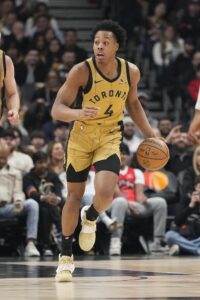 Scottie Barnes (Raptors): Five years, maximum salary (story). Projected value of $224,238,150. Projected value can increase to $269,085,780 if Barnes meets Rose Rule performance criteria. Includes 15% trade kicker.
Scottie Barnes (Raptors): Five years, maximum salary (story). Projected value of $224,238,150. Projected value can increase to $269,085,780 if Barnes meets Rose Rule performance criteria. Includes 15% trade kicker.- Cade Cunningham (Pistons): Five years, maximum salary (story). Projected value of $224,238,150. Projected value can increase to $269,085,780 if Cunningham meets Rose Rule performance criteria.
- Evan Mobley (Cavaliers): Five years, maximum salary (story). Projected value of $224,238,150. Projected value can increase to $246,661,965 or $269,085,780 if Mobley meets Rose Rule performance criteria. Includes 15% trade kicker.
- Franz Wagner (Magic): Five years, maximum salary (story). Projected value of $224,238,150. Projected value can increase to $246,661,965 or $269,085,780 if Wagner meets Rose Rule performance criteria.
- Alperen Sengun (Rockets): Five years, $185,000,000 (story). Includes fifth-year player option.
- Jalen Suggs (Magic): Five years, $150,500,000 (story).
- Jalen Johnson (Hawks): Five years, $150,000,000 (story).
- Trey Murphy (Pelicans): Four years, $112,000,000 (story).
- Jalen Green (Rockets): Three years, $105,333,333 (story). Includes third-year player option and 10% trade kicker.
- Corey Kispert (Wizards): Four years, $54,050,000 (story). Includes fourth-year team option.
- Moses Moody (Warriors): Three years, $37,500,000 (story). Includes $1,500,000 in incentives.
As is typically the case, the maximum-salary deals were completed relatively early in the offseason, with Barnes, Cunningham, and Wagner all signed by July 10 and Mobley’s deal coming a couple weeks later.
While I’m not necessarily surprised that those four players got max extensions, it’s worth noting that their career résumés are a little lighter than what we typically see from that group of maximum-salary players. Barnes is the only one of the four who has earned an All-Star nod. By comparison, Anthony Edwards, Tyrese Haliburton, and LaMelo Ball had each made an All-Star team before signing their max extensions a year ago.
That’s not to say that this year’s maximum-salary rookie scale extensions are ill-advised investments, but they’re certainly big bets on continued growth from those four players.
No rookie scale extension agreements were reached between July 22 – when Mobley signed his contract with the Cavs – and October 19, but we got a flurry of action in the final 24 hours before Monday’s deadline, with Warriors guard Moses Moody striking a deal on Sunday night and six more players following suit on Monday.
Moody’s three-year, $39MM deal with Golden State was the smallest of 2024’s rookie scale extensions in terms of both overall money and average annual value, but it’s one of the more intriguing deals of the year. Securing $39MM in guaranteed money is a big win for a player who has never averaged more than 17.5 minutes per game or made more than 11 starts in a season, but Moody still has enough upside that the contract could turn into a steal for the Warriors.
Kispert got the only other rookie scale extension worth less than $100MM overall, with his new four-year deal coming in a little under the non-taxpayer mid-level exception. That’s a fair price for a player who can spread the floor like Kispert, and it could look more team-friendly if he continues to expand his offensive game and/or improves defensively.
I wasn’t necessarily expecting the Rockets to extend Sengun and Green at this time, since they could have put themselves in position to be a cap-space team in 2025 by not locking up that duo quite yet.
That option is likely off the table now, but that’s OK — Houston did well to get Sengun for nearly $40MM below his projected max, and the deal with Green is a unique one that could be a win-win. The former No. 2 overall pick gets a nine-figure payday while the Rockets get another two or three years to observe his growth and assess whether he’s worth a more lucrative longer-term commitment.
Reporting leading up to Monday’s deadline indicated that Suggs and Johnson were among the players seeking $30MM+ annual salaries on rookie scale extensions. Both players got there, just barely, on new five-year contracts with their respective Southeast clubs. Already an All-Defensive player, Suggs is poised to take on more offensive responsibilities in 2024/25 and beyond. If he handles that increased offensive role well, he should deliver a solid return on investment for the Magic.
The Johnson deal could be viewed as a risky bet on a relatively small sample, since the forward had played an extremely limited role for the Hawks in his first two seasons before breaking out in an injury-shortened year in 2023/24. But there’s a path to stardom for Johnson, and if he continues along that path, that $30MM annual salary will eventually look like a bargain for Atlanta.
Finally, Murphy locked in a new deal at $28MM per year with the Pelicans, who have now secured Zion Williamson, Dejounte Murray, Herbert Jones, and Murphy on long-term contracts. Murphy’s extension suggests that either Brandon Ingram or CJ McCollum might be playing for a new team within a year or two, since the cost-conscious Pels would have to go well into luxury tax territory to hang onto both veterans beyond 2025.
A total of 24 players entered the offseason eligible for rookie scale extensions, so almost half the players in that group signed them. That leaves 13 players who didn’t reach agreements and will be entering contract years.
Here’s that list of those players, who are now eligible to become restricted free agents during the 2025 offseason, assuming they finish out their current contracts:
Kuminga is the most noteworthy extension candidate not to sign a new deal before Monday’s deadline. He and the Warriors reportedly had discussions throughout the offseason but didn’t ultimately gain serious traction toward an agreement.
Golden State’s offer was rumored to be in the neighborhood of $30MM per year, whereas a maximum-salary extension for Kuminga would have been worth in the $43-45MM range. He’ll bet on himself this season in hopes of securing a huge payday in restricted free agency.
Giddey and Thomas are among the other notable extension candidates who didn’t get new deals and could be targets for lucrative offer sheets in July of 2025. I had viewed players like Aldama, Grimes, Jackson, and Mann as potential candidates for modest extensions, but they’ll have to prove their worth this season too.
A few players in this group – like Duarte, Springer, and Williams – never looked like serious extension candidates and will need to make their case this season that they’re worthy of qualifying offers in 2025 free agency.
Finally, it’s worth mentioning that there were six players selected in the first round of the 2021 draft who weren’t eligible at all for rookie scale extensions entering this offseason, for various reasons. Those players are as follows:
Of these six players, only Johnson is currently on a standard NBA contract — he has a non-guaranteed deal with the Nets. Christopher (Heat) and Jones (Clippers) are on two-way contracts, while Garuba is playing in Spain for Real Madrid. Bouknight and Primo aren’t on a roster and may open the season in the G League.
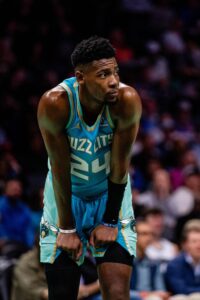 As our tracker shows, 35 options have been picked up so far, but a number of teams still have decisions to make on players who were first-round picks in 2022 and 2023. Some of those remaining option decisions are no-brainers — the Hornets haven’t yet exercised Brandon Miller‘s $11.97MM option for 2025/26, but there’s no doubt they’ll do so.
As our tracker shows, 35 options have been picked up so far, but a number of teams still have decisions to make on players who were first-round picks in 2022 and 2023. Some of those remaining option decisions are no-brainers — the Hornets haven’t yet exercised Brandon Miller‘s $11.97MM option for 2025/26, but there’s no doubt they’ll do so.